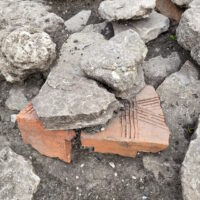 An excavation at the site of a real estate development in Grove, Oxfordshire, has uncovered the remains of a richly-decorated Roman villa complex that contained a wealth of artifacts including coins, jewelry, lead curse tablets without curses and tiny votive axes. It had a long period of occupation, from construction in the 1st or 2nd century through abandonment in the late 4th or early 5th century.
An excavation at the site of a real estate development in Grove, Oxfordshire, has uncovered the remains of a richly-decorated Roman villa complex that contained a wealth of artifacts including coins, jewelry, lead curse tablets without curses and tiny votive axes. It had a long period of occupation, from construction in the 1st or 2nd century through abandonment in the late 4th or early 5th century.
During a year of excavation, archaeologists from the Red River Archaeology Group unearthed a monumental aisled building with internal colonnades typical of the late 1st century A.D. The building was likely multistorey and almost 11,000 square feet just on the ground floor. No columns have survived, but four column bases have and they are among the largest of their kind ever found in Roman Britain.
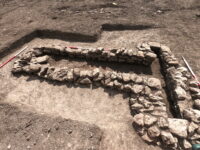 Adjacent to that building is a winged corridor villa characterized by a central group of rooms flanked on each side by wings of rooms accessed by a central corridor. It had walls painted with floral motifs and mosaic floors as well as an intricate brickwork floor. Hypocaust tiles have been found, the remnants of a hypocaust underfloor heating system for private bathhouses. A cereal drying oven was also discovered, part of the complex’s agricultural and food storage function.
Adjacent to that building is a winged corridor villa characterized by a central group of rooms flanked on each side by wings of rooms accessed by a central corridor. It had walls painted with floral motifs and mosaic floors as well as an intricate brickwork floor. Hypocaust tiles have been found, the remnants of a hypocaust underfloor heating system for private bathhouses. A cereal drying oven was also discovered, part of the complex’s agricultural and food storage function.
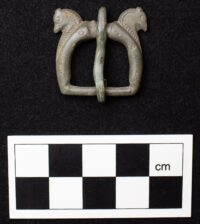 Hundreds of coins, rings and brooches have been found in the villa complex. One particularly significant piece is a double horse-head brooch or buckle dating to between 350 and 450 A.D. It was likely worn by a member of the military elites. They also found several axes small enough to fit in a palm, and a number of tightly scrolled lead strips look just like curse tablets. The ones that have been unfurled so far are blank on the inside. If they were meant to curse, the curse itself was left unwritten. The mini axes coupled with the mysterious curse-like scrolls, suggest the villa or some part of the complex was a site of pilgrimage or ritual significance.
Hundreds of coins, rings and brooches have been found in the villa complex. One particularly significant piece is a double horse-head brooch or buckle dating to between 350 and 450 A.D. It was likely worn by a member of the military elites. They also found several axes small enough to fit in a palm, and a number of tightly scrolled lead strips look just like curse tablets. The ones that have been unfurled so far are blank on the inside. If they were meant to curse, the curse itself was left unwritten. The mini axes coupled with the mysterious curse-like scrolls, suggest the villa or some part of the complex was a site of pilgrimage or ritual significance.
“The sheer size of the buildings that still survive and the richness of goods recovered suggest this was a dominant feature in the locality, if not the wider landscape,” Louis Stafford, Red River Archaeology senior project manager, said.
Her colleague Francesca Giarelli added the site was “far more complex than a regular rural site and clearly was an important centre of activities for a long time”.
Here is a drone video flyover of the site:
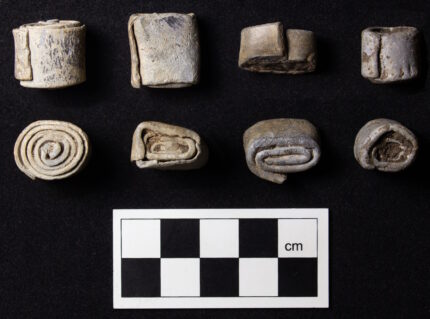
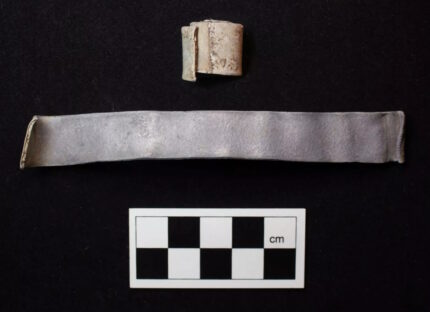
“What have the Romans ever done to *us*?!” 🤔️ – If it were not for those “miniature votive axes”, I would not take the leaden “curse” tablets for granted.
Lead mistakenly was also used for e.g. plumbing, and someone doing some form of an installation might have prepared those pieces in exactly that manner.